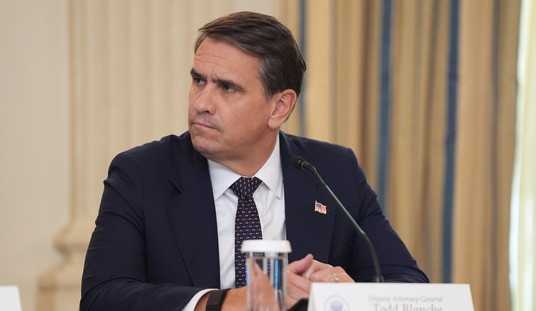With all of the heated rhetoric coming from Washington these days you would think there is a huge difference in the way Republicans and Democrats want to reform Medicare.
But did you know that over the next decade there is no difference at all between the agendas of the two parties? Although the House Republicans voted to repeal ObamaCare they did not vote to repeal the cuts in Medicare spending intended to pay for ObamaCare. So for the next ten years, there’s not a dime’s worth of difference between the two parties, to quote an all but forgotten political refrain.
Even more surprising, there is no difference between what the House Republican budget proposes and what Democrats voted for in last year’s health reform bill for anyone over the age of 55. It’s only young people who have a real stake in this fight. But as former Medicare Trustee Thomas Saving and I reported in The Wall Street Journal the other day, the cuts the two parties are proposing are so draconian, that there is little chance they will ever see the light of day.
In a way, that’s bad news. Absent politically unsustainable spending cuts, Medicare’s unfunded liability is almost $90 trillion at today’s prices, looking indefinitely into the future. That’s about six times the size of the entire U.S. economy. And Medicare spending is growing at twice the rate of growth of our national income. Clearly that cannot go on forever.
So what can be done? Fortunately, there are three common sense steps we can take that will give us substantial reform with a minimum of pain.
My colleagues and I at the National Center for Policy Analysis found we can solve Medicare’s financial problems this way:
-Using a special type of Health Savings Account, beneficiaries would be able to manage at least one-fifth of their health care funds, keeping each dollar of wasteful spending they avoid to spend on other consumption.
-Physicians would be free to repackage and re-price their services — thus profiting from innovations that lower costs and raise the quality of care.
-Workers (along with their employers) would save and invest 4 percent of wages in tax free accounts — eventually reaching the point where the average person in each generation of retirees pays for his own post-retirement medical care.
The first reform lets seniors do what 23 million younger Americans are already doing. Instead of paying three premiums to three plans (Medicare, medigap and drug insurance) for wasteful first-dollar coverage, seniors would be able to choose a single plan that provides comprehensive catastrophic insurance for any cost, say, above $2,500. They could then take all the money they were previously giving to insurance bureaucracies and spending on copayments ($2,500 or more!) and manage their own small dollar expenses through a savings account they would own and control.
This arrangement would change the economic incentives of senior patients, just as it has for younger patients. Every dollar of waste a patient avoids is a dollar he or she gets to keep and use for other purposes. Imagine what difference that would make. For the first time in Medicare’s history, we would have close to 47 million people with an economic self-interest in keeping health costs down.
The second reform would let doctors do what suppliers of other professional services do in every other market: profit from lowering costs and improving the quality.
Doctors participating in Medicare today must practice medicine under an outmoded, wasteful payment system. Typically, they receive no financial reward for talking to patients by telephone, communicat¬ing by e-mail, teaching patients how to manage their own care or help¬ing them be better consumers in the market for drugs. Medicare pays doctors government-mandated fees for about 7,500 specific tasks and these tasks are not on the list.
Other health care providers face the same perverse incentives. In fact, all too often high-cost, low-quality care is reimbursed at a higher rate than low-cost, high-quality care.
How can we produce high-quali¬ty care for a cost that is well below the price we are paying today? For¬tunately, we do not have to specu¬late. There are hundreds of exam¬ples of efficient, high-quality care, and many of them have been stud¬ied and described in the academic literature.
To reverse these perverse incentives, we propose to allow providers who save Medicare a dollar to be able to pocket 25 cents (or some other substantial amount). Once 800,000 doctors and 5,000 hospitals and tens of thousands of other suppliers realize that they can make money by saving taxpayers money, cost-reducing innovations will spring up everywhere, overnight.
The final reform is to stop running Medicare like a Bernie Madoff Ponzi scheme. Although employees are told that their payroll taxes are funding their retirement medical care, in fact every dime is being spent – the very minute, the very hour, the very day it comes in the door. When today’s young people reach the retirement age, they will get health care benefits only if future taxpayers are willing to cough up a lot more than what today’s taxpayers are paying.
We have calculated that if employees and their employers deposit four percent of wages in a tax-free account (managed safely and securely away from the grasp of politicians), the average employee can fund his own post-retirement health care. We can meet all of Medicare’s promises by mid-century with a payroll tax no greater than the one we have today.
In fact the payroll tax would not be needed at all, except for low-income workers who do not produce enough to pay their own way.
None of these reforms would take away government’s commitment to the elderly. To the contrary, we need these reforms to make that commitment a meaningful reality.

























Join the conversation as a VIP Member